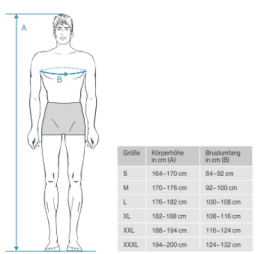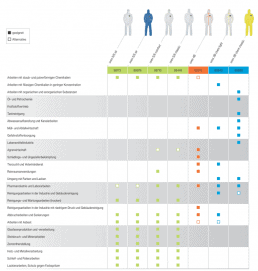There are lots of different chemical protection suits to choose from in the uvex shop – so it’s not all that easy to decide which one to buy. Which coveralls conform with your prescribed standards and which offer the level of occupational safety needed for the work you do? A number of aspects play an important role when choosing the perfect protective clothing: fit, wearer comfort, ease of use and the ability to combine it with other PPE components
In this blog article, we provide you with useful tips for selecting occupational safety equipment and take you through three simple steps to help you come to a decision.
Step 1: standards – PPE Regulation
Prescribed standards in your field of work are the most important factor when deciding on the best chemical protection suit for you. PPE Regulation EU 2016-425 must be taken into particular consideration in this process.
Further information on this PPE Regulation can be found in our blog article “PPE Regulation – standards, guidelines & safety regulations”.
What other standards apply to chemical protection suits? Read more about this in our blog.
Personal protective equipment (PPE) can be broken down into three categories. But which category is the most relevant to you? The following three categories exist depending on the level of risk that the protective clothing is designed to protect against:
- Category I: low risk = simple protective equipment
- Category II: protective clothing that protects the wearer against hazards that do not fall into category I or III
- Category III: high risk = protective clothing that protects the wearer against potentially fatal hazards or serious and irreversible damage to health
Please note: chemical protection clothing is always classified as category III.
Do you fall into one of the above categories? If you need help classifying your level of risk, please do not hesitate to get in touch!
identified the level of risk for your field of activity, you can move onto step 2.
Step 2: the right size – protective clothing with a perfect fit
Compliance with required standards alone by no means guarantees sufficient protection. In addition to choosing the right accessories, ensuring a correct fit is also hugely important. Selecting the right size affects both the suit’s protective function and wearer comfort.
An ill-fitting protective suit can have serious consequences:
- Too small:
If your coveralls are too small, your freedom of movement will be severely restricted and, in the worst case scenario, the protective clothing will tear, exposing you to serious risks.
- Too big:
If your coveralls are too big, they may get caught in machinery and place you in a life-threatening situation.
To ensure a perfect fit and to guarantee maximum safety when working with hazardous substances, uvex coveralls are available in a wide range of sizes.
The following table shows the body measurements and the corresponding uvex sizes.

Please note that these size definitions are based on actual body measurements taken while wearing underwear but without wearing shoes. These sizes therefore differ from standard clothes sizes, so please always select coveralls according to your actual body measurements and not your usual clothes size.
Once you have determined your measurements correctly and identified the size of uvex protective suit you need, we can move onto the last step and select your perfect coveralls.
Step 3: wearer comfort – material and composition of coveralls
Finally, you should also give some thought to wearer comfort so that your work is not negatively impacted in any way by wearing ill-fitting or uncomfortable work clothing. The following factors affect wearer comfort and lead to a high level of wearer acceptance:
- Feels pleasant next to the skin
- Breathability
- Air permeability
- Low weight
- Optimum freedom of movement
As the level of protection increases, the climate control of the material decreases. As such, you should weigh up carefully which coveralls are right for you, so that you can strike a balance between optimal protection and maximum wearer comfort for the area of use in question.
The following comparison chart and decision tree may help you to choose the right protective suit for you:

We wish you every success selecting your personal protective suit. Please do not hesitate to get in touch if you have any queries or suggestions.
I really like the post that you have shared. Thanks for sharing this here.